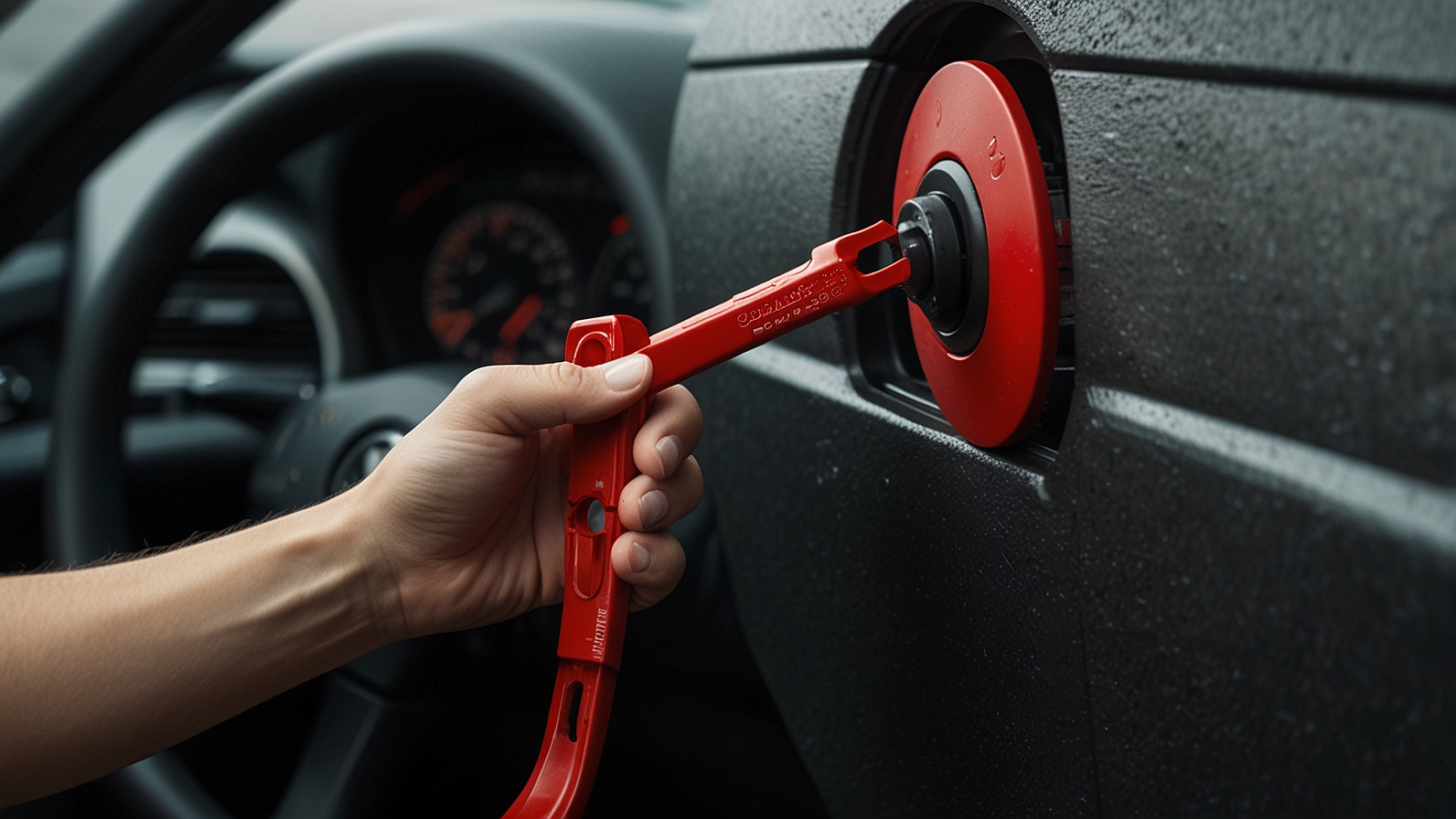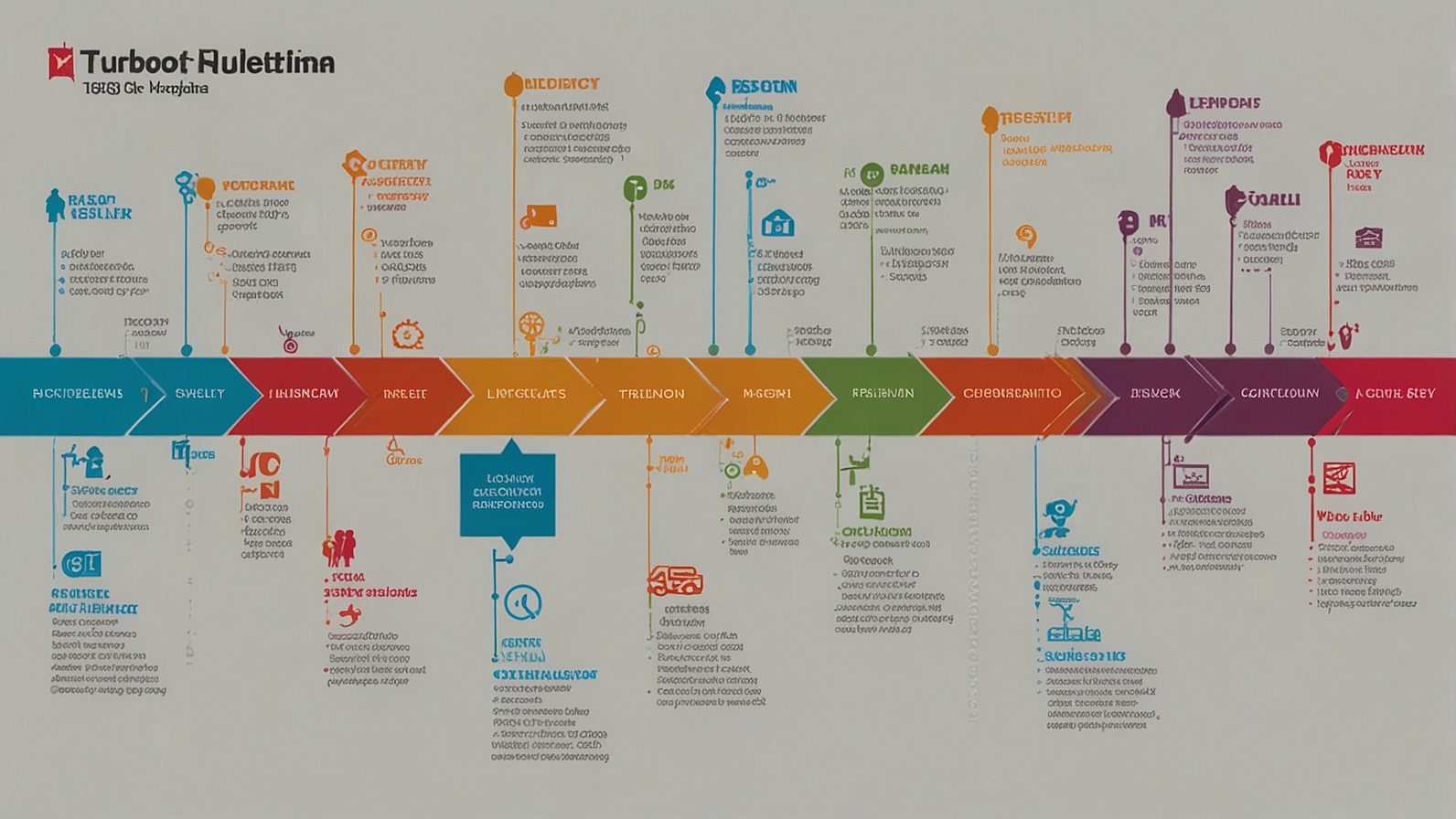How-To Guides
Data Management: Principles and Methods

Data management is a critical component of modern business operations, encompassing a set of principles and methods designed to ensure that data is collected, stored, processed, and utilized to maximize its value and minimize risks. In today’s data-driven world, organizations across all industries rely on data to make informed decisions, drive innovation, enhance customer experiences, and gain a competitive edge. However, managing data effectively is a complex and multifaceted challenge, requiring a comprehensive approach that addresses various aspects of data management, including data governance, quality, security, and integration.
Data management is about understanding the nature of your data, organizing it meaningfully, and applying the right tools and techniques to extract actionable insights. This involves defining clear data management policies and procedures, establishing robust data governance frameworks, and implementing advanced technologies. By doing so, organizations can ensure that their data is accurate, consistent, and reliable, enabling them to make better decisions and achieve their business objectives. Consult with Managed IT Services Red Bank experts for an effective data management plan for your business.
In this article, we will explore what does data management mean, data management methods and data management principles.
What is Data Management?
Data management refers to collecting, storing, organizing, and maintaining data in a structured manner to ensure its accuracy, accessibility, and security. This encompasses a range of activities, including data entry, validation, backup, and archiving. Effective data management is crucial for businesses and organizations to make informed decisions based on reliable information.
It helps optimize data usage, improve operational efficiency, comply with regulations, and protect sensitive information from unauthorized access or loss. Data management practices are essential in today’s digital age, where vast amounts of data are generated daily across various platforms and systems. Organizations prioritizing efficient data management strategies can gain a competitive edge by effectively harnessing their data assets’ power.
4 Principles of Data Management in Business
- Data Modeling
Data modeling is a fundamental aspect of data management principles. It involves creating a visual representation of how data is structured and organized within a database system. By developing a data model, organizations can better understand their data assets, relationships between different data elements, and the flow of information within their systems.
This process helps ensure data is accurately captured, stored, and utilized for various business operations. Effective data modeling is essential for maintaining data integrity, enabling efficient data retrieval, and supporting informed decision-making processes within an organization.
- Collect and Analyze Metadata
Collecting and analyzing metadata is a critical aspect of practical data management principles. Metadata provides essential information about the data, such as its source, format, and context, which is crucial for effectively understanding and utilizing the data. Organizations can ensure data quality, improve data governance, and enhance data security by collecting and analyzing metadata.
Additionally, metadata analysis can help identify patterns, trends, and relationships within the data, leading to valuable insights that inform decision-making processes. A structured approach to collecting and analyzing metadata is critical to establishing a solid foundation for efficient data management practices within an organization.
- Data Roles and Responsibilities
When it comes to data management, clearly defined roles and responsibilities are essential for ensuring the proper handling and security of data within an organization. Assigning specific roles to individuals or teams helps establish accountability and streamline data governance, quality assurance, and compliance processes.
Data stewards are typically responsible for overseeing the overall management of data assets, ensuring data integrity, and enforcing policies and procedures related to data usage. On the other hand, data custodians are tasked with the technical aspects of managing data, including storage, access control, and security measures. By clearly defining these roles and responsibilities within an organization, companies can promote a culture of data accountability and transparency while mitigating risks associated with improper data handling.
- Creating data lifecycle strategies
Creating data lifecycle strategies is a crucial aspect of data management principles. By implementing a robust strategy encompassing the entire data lifecycle, organizations can ensure that data is effectively utilized, secured, and compliant with regulations throughout its lifespan. A well-defined data lifecycle strategy typically includes data creation, storage, usage, sharing, archiving, and disposal.
By establishing clear guidelines and procedures for each stage, organizations can optimize their data management practices and derive maximum value from their data assets while minimizing risks associated with data misuse or breaches. Businesses must continuously review and update their data lifecycle strategies to adapt to evolving technology, regulatory requirements, and business needs.
4 Methods of Data Management For Business
- Data Collection
Data collection is a crucial step in data management methods. It involves gathering information from various sources, such as surveys, interviews, observations, and existing databases. The accuracy and relevance of the collected data are paramount for making informed decisions and drawing meaningful insights.
To ensure quality data collection, it is essential to establish clear objectives, use reliable data collection tools, maintain consistency in data-gathering processes, and adhere to ethical standards. By following systematic data collection procedures, organizations can enhance the reliability and validity of their data, leading to more accurate analysis and strategic decision making.
- Data Storage
Data storage is a critical component of effective data management methods. Proper data storage ensures that information is securely, easily accessible, and well-organized. Various data storage options are available, including cloud storage, on-premise servers, and external hard drives. Each option has advantages and considerations, such as cost, scalability, and security.
Assessing your specific needs and requirements is important when determining the most suitable data storage method for your organization. This will ensure that your data is stored efficiently and safely. Regular backups and data protection measures should also be implemented to safeguard against potential data loss or security breaches.
- Data Processing
Data processing is a critical component of data management methods. It involves converting raw data into meaningful information through various techniques and tools. The process typically includes data entry, validation, sorting, transformation, and summarization to generate insights that can be used for decision-making purposes.
With technological advancements, data processing has become more efficient and sophisticated, allowing organizations to handle large volumes of data with greater accuracy and speed. Implementing robust data processing methods is essential for ensuring the data’s quality and integrity for analysis and operational purposes.
- Data Integration
Data integration plays a crucial role in data management methods. It involves combining and unifying data from various sources to provide a comprehensive view of the information. By integrating data from disparate systems and sources, organizations can streamline operations, improve decision-making processes, and enhance efficiency.
Data integration helps ensure that data is accurate, consistent, and up-to-date across different platforms, enabling better analytics and reporting capabilities. Implementing effective data integration strategies is essential for organizations looking to maximize the value of their data assets and drive business success.
In Conclusion
Effective data management is essential for organizations seeking to maximize the value of their data assets. By adhering to fundamental principles such as data quality, data governance, and data security, in conjunction with strategies like data integration, data warehousing, and data visualization, businesses can leverage their data to drive informed decision-making, improve operational efficiency, and gain a competitive edge in today’s data-driven world. Embracing these principles and methods not only guarantees the accuracy, security, and accessibility of data but also lays the groundwork for innovation and growth. For more information on data management, visit the Managed IT Services Cleveland team for assistance.
How-To Guides
The Levapioli Tool: Your Ultimate Guide to Scratch-Free DIY

Ever sunk an hour into a simple car repair, only to be met with the heart-sinking crack of a plastic trim piece? Your fingers are sore, your patience is thin, and you’re now facing a costly repair for a part you were just trying to fix.
We’ve all been there. The problem is rarely a lack of skill—it’s using the wrong tool for a incredibly delicate job. This is exactly the scenario the levapioli tool was designed to prevent. Think of it as the secret weapon that separates a clean, professional job from a DIY disaster.
What is a Levapioli? Your First Step to Scratch-Free Car Work
Let’s clear this up first: what exactly is this thing? Imagine a crowbar designed for surgery. That’s a levapioli.
It’s a precise, non-marring prying tool that acts like a key, expertly releasing hidden clips and pins without damaging the soft plastic or painted surfaces of your car’s interior. While “levapioli” is often used as a catch-all name (much like “Kleenex” for tissues), it technically refers to a style of sturdy, plastic pry bar that’s become a must-have in any garage.
Why Your Screwdriver is a Terrible Substitute
It’s tempting to grab that trusty flat-head screwdriver. It’s metal, it’s sturdy, it’s right there. But resist the urge! Using a metal tool on your car’s interior is like using a sledgehammer to crack a nut.
The cost of using the wrong tool is high: marred trim, gouged dashboards, and shattered clips that are a nightmare to replace. Here’s a quick comparison:
| Tool | Use Case | Risk of Damage |
|---|---|---|
| Flat-Head Screwdriver | Prying trim | Very High (gouges, cracks, paint chips) |
| Your Fingers | Removing clips | High (soreness, broken clips) |
| Levapioli Tool | Prying trim, removing clips | Very Low (when used correctly) |
A levapioli is made from rigid yet forgiving materials like nylon, so it applies force without leaving a mark. It’s all about finesse, not force.
How to Use a Levapioli Like a Pro: A Step-by-Step Guide
Okay, you’re convinced. Now how do you use this thing without breaking anything? Follow these steps:
- Identify the Clip Locations: Before you pry, gently feel along the seam of the panel. Look for slight bumps or gaps. A flashlight can help you spot the hidden fasteners.
- Choose the Right Pry Tip: Most levapioli kits come with multiple shapes—forked, flat, and curved. A forked tip is perfect for prying out circular clips, while a flat tip is ideal for sliding into tight seams.
- Work Slowly and Methodically: Insert your chosen tip, apply gentle, steady pressure, and listen for a soft pop. That’s the sound of success! Move a few inches over and repeat. Never try to pull the entire panel off at once.
- Keep a Magnet or Container Handy: For those tiny, flying clips that always seem to disappear. Trust us on this one.
Beyond Door Panels: 5 Unexpected Uses for Your Levapioli
This tool’s talent isn’t limited to door panels. Its versatility makes it a superstar for:
- Radio Head Unit Removal: Perfect for prying off the trim bezel around your stereo.
- Grille Removal: Safely unclip the front grille for cleaning or replacement.
- Dash Cam Wire Tucking: Gently route wires along the headliner and A-pillar without damaging edges.
- Wheel Arch Liner Clips: Quickly remove those stubborn fender liner clips for brake work.
- Household Electronics: Great for opening up tablets, phones, or game controllers without leaving a mark.
Choosing the Best Levapioli Kit for Your Needs
Not all pry tools are created equal. Here’s what to look for:
- Material: Most are durable nylon. Higher-end models from brands like OTC or OEM Tools might have a flexible metal core for extra strength on stubborn clips, but they’re always coated in plastic to protect surfaces.
- Kit Size: A basic 3-piece set is great for beginners. Enthusiasts might want a larger kit with specialized hooks and picks for every conceivable job.
- Feel: Look for tools with a comfortable, ergonomic grip. You’ll be holding it for a while!
3 Pro Tips to Try on Your Next Project
- Warm Up Plastic: On a cold day, warm the interior trim with a hairdryer for 60 seconds. It makes old, brittle plastic more flexible and less likely to crack.
- Tape is Your Friend: Put a piece of masking tape on the paint or delicate surface near your pry point for an extra layer of protection.
- Start from the Bottom: Clips usually release easiest from the bottom of a panel. Work your way up and around for the cleanest removal.
So, what’s the first trim job you’re going to tackle with your new favorite tool?
You May Also Read: Your Ultimate Engine Guide: Unlocking Practical Knowledge at enginefirm.com
FAQs
Is a levapioli the same as a plastic pry tool?
Yes, absolutely. “Levapioli” is commonly used to refer to a set of non-marring plastic pry tools and trim removers.
Can it really prevent all damage?
When used correctly, it drastically reduces the risk. However, old, sun-baked plastic can be brittle. Always work slowly and use heat to soften aged plastic.
What’s the best material for a levapioli tool?
Durable, rigid nylon is standard. Pro-grade kits often add a metal core for strength but keep a non-marring plastic coating.
Are the cheap sets on Amazon any good?
For the occasional DIYer, a budget-friendly set is a fantastic starting point and far better than using metal tools. They might not withstand daily professional use but are perfect for home garages.
What should I do if I break a clip?
Don’t panic! It happens to everyone. Keep the broken pieces, note the style and location, and order a replacement clip online or from a dealership. They’re usually very inexpensive.
How-To Guides
How to Get in Touch in turbogeek.org for Support & Collaboration

In an age where a typical website visitor spends less than a minute on a page, making a meaningful connection is the ultimate digital currency. We’re surrounded by contact forms that lead to black holes and generic email addresses that never reply. This is precisely why we’ve re-engineered the entire process. If you’ve landed on this page, you’re not just looking for an address; you’re seeking a genuine point of contact. You want your voice to be heard, your problem to be solved, or your visionary idea to be explored. This guide is your direct line. It’s your complete roadmap on how to effectively get in touch in turbogeek.org and ensure your message lands in the right hands, for the right purpose, at the right time.
Why Your Voice Matters to TurboGeek
Before we dive into the “how,” let’s talk about the “why.” TurboGeek isn’t a monolithic entity; it’s a collective of writers, developers, designers, and tech enthusiasts. Every major update, troubleshooting guide, or new collaboration often starts with a single message from someone like you.
- Feedback Drives Improvement: That comment about a typo? It makes our content more professional. Your suggestion for a topic? It might become next week’s featured article.
- Support Requests Reveal Blind Spots: When you report a bug or something that’s not working, you’re not complaining—you’re helping us fortify the website for thousands of other users.
- Collaborations Spark Innovation: Some of our best projects have sprung from a simple email from a developer, a startup founder, or a fellow content creator.
Think of it like this: sending us a message isn’t dropping a letter into a void. It’s more like walking into a busy, friendly workshop and tapping the right person on the shoulder. We want that interaction to be as smooth and productive as possible.
The Right Channel for Your Mission: How to Get in Touch in turbogeek.org
Not all inquiries are created equal. Using the correct channel dramatically speeds up response times and ensures your message gets to the team best equipped to help. Here’s a breakdown of your options, designed like a choose-your-own-adventure for communication.
1. The Contact Form: Your All-Purpose Tool
The most direct way to get in touch in turbogeek.org is through our dedicated contact form. It’s the central hub for all non-urgent, general inquiries.
- Best For: General questions, feedback on content, article suggestions, press inquiries, and preliminary collaboration ideas.
- How to Find It: Navigate to the website’s main menu. You’ll typically find a link labeled “Contact,” “Get in Touch,” or “Connect with Us.”
- Pro-Tip for Success: Be specific in the subject line. Instead of “Hello,” try “Collaboration Idea: AI in Renewable Energy” or “Feedback on ‘Quantum Computing for Beginners’ Article.” This helps us route your message instantly.
2. Support Direct: For Technical Hiccups
Are you facing a broken link, a loading error, or a problem with a downloadable resource? This is the channel for you.
- Best For: Technical issues specifically related to the turbogeek.org website functionality.
- How to Find It: Look for a “Support” or “Report an Issue” link, often located in the website’s footer. This often pre-fills the form category to “Technical Support.”
- Pro-Tip for Success: Include details! Your browser (Chrome, Safari, etc.), the device you’re using (iPhone, Windows PC), and the exact URL where the problem occurred. A screenshot is worth a thousand words.
3. The Partnership Pipeline: For Business Proposals
We actively seek to collaborate with brands, tech companies, and educational institutions that align with our mission of demystifying technology.
- Best For: Advertising inquiries, sponsored content proposals, affiliate partnerships, and co-hosted webinars or events.
- How to Find It: Seek out a “Partners,” “Advertise,” or “Work With Us” page. This form is tailored to gather business information like company name and project scope.
- Pro-Tip for Success: Do a little homework first. Briefly explain why you believe our audiences are a good fit and what a potential collaboration could look like.
Comparison Table: Choosing Your Contact Path
| Your Goal | Recommended Channel | Expected Response Time |
|---|---|---|
| General Question / Feedback | Main Contact Form | 2-3 Business Days |
| Technical Website Issue | Support Direct Link | 1-2 Business Days |
| Business/Partnership Proposal | Partnership Pipeline Page | 3-5 Business Days |
| Urgent Security Issue | Dedicated Security Email | < 24 Hours |
Crafting the Perfect Message: A Template for Success
We want to help you quickly. A well-structured message is the fastest way to get a resolution. Here’s a simple template you can adapt:
Subject Line: [Clear Category]: [Brief Description]
- Example: Partnership Proposal: Web3 Developer Toolkit Collaboration
- Example: Support Request: Video not loading on Homepage
Body of Message:
- Introduction: “Hello TurboGeek Team,”
- Context: “I’m a long-time reader and software developer…” or “I was reading your article on [Article Title] when I noticed…”
- The Core Ask: Clearly state what you need, your idea, or the problem you’re facing. “I wanted to suggest a topic on…” or “I am experiencing an error when I try to…”
- Relevant Details: Include links, error messages, or specific examples.
- Closing: “Thank you for your time and consideration. I look forward to hearing from you.”
- Your Name
What Happens After You Reach Out?
Wondering about the next steps? Here’s our promise to you:
- Automatic Acknowledgement: You’ll receive an immediate auto-reply confirming we’ve received your message.
- Triage and Routing: Our team lead reviews and routes each message to the appropriate department (editorial, technical, business).
- Deep Dive: The relevant team investigates your query, tests reported bugs, or reviews your proposal.
- Human Response: A real person—not a bot—will craft a response addressing your specific points. We strive to respond to all queries within our stated time frames.
Key Takeaways and Your Next Step
Making contact should be simple, not a puzzle. Remember, the most effective way to get in touch in turbogeek.org is to use the purpose-built channel for your specific need and to provide clear, concise information.
- Use the right form for your goal (General, Support, Business).
- Write a descriptive subject line to get noticed.
- Provide all necessary details to avoid back-and-forth emails.
We built these channels because we truly value the dialogue with our community. Your input is the secret ingredient that keeps TurboGeek relevant, accurate, and on the cutting edge.
What will you reach out about first? A topic idea you’re passionate about? A bug you spotted? Or perhaps the seed of a collaboration waiting to happen? We’re all ears.
You May Also Read: ProcurementNation.com Contact Guide
FAQs
What is the average response time after I get in touch in turbogeek.org?
For general inquiries via the main contact form, please allow 2-3 business days for a response. Technical support requests are often addressed within 1-2 business days.
I have a great idea for a guest post. How do I submit it?
That’s fantastic! Please use our main Contact Form. Select the “Content Idea” or “Guest Post” category if available, or mention it clearly in your subject line. Include a brief outline of your proposed topic and any relevant writing samples or portfolio links.
I found a security vulnerability on your site. How do I report it responsibly?
We take security incredibly seriously. Please do not use the public contact forms. Look for a dedicated “Security” or “Report a Vulnerability” email address typically listed on our Security Policy page or in the website footer. We appreciate responsible disclosure.
Why didn’t I get a reply to my message?
First, please check your spam or junk folder, as our reply might have landed there. If it’s been longer than the stated response time, feel free to send a polite follow-up message, referring to your original sent date.
Do you offer technical support for products or services reviewed on your site?
While we provide guides and tutorials, we are not the official support channel for third-party products. For issues with a specific product, we always recommend contacting the manufacturer’s support team directly for the fastest help.
Are you open to collaborating with new startups?
Absolutely! We love hearing from innovative startups. Please use the “Partnership” or “Work With Us” channel to introduce your company and proposal. The more you can tell us about the mutual benefit for our audiences, the better.
Can I request a review of my product or software?
Yes. We are always on the lookout for new and interesting tech to cover. Send us a pitch through the partnership channel with details about your product and what makes it unique.
How-To Guides
PLG Supplies: The Unsung Hero of Every Successful Build

Imagine building your dream home. You’ve got the architect’s stunning plans, a trusted contractor, and a solid budget. But what about the thousands of components that bring those plans to life? The pipes hidden behind the walls, the switches that control the ambiance, the essential fittings that hold everything together? This is the world of PLG supplies—the Plumbing, Lighting, and General hardware that are the absolute bedrock of any build. Getting them right isn’t just important; it’s the difference between a project that stands the test of time and one that becomes a maintenance nightmare. So, what exactly falls under this crucial category, and how can you make the best choices for your next project?
What Exactly Are PLG Supplies? Breaking Down the Acronym
Think of PLG supplies as the vital organs of a building. You don’t always see them, but if they fail, the whole system can shut down. This category encompasses a huge range of non-structural components that are essential for a building’s functionality and comfort.
- P is for Plumbing: This covers everything that makes water flow in and out. We’re talking pipes (copper, PEX, PVC), fittings, valves, taps, sinks, toilets, showers, and all the seals and connectors that prevent leaks. Brands like Pegler, Mira, and Grohe are giants in this space.
- L is for Lighting: This is all about illumination and atmosphere. It includes wiring, cables, switches, sockets, circuit breakers, light fixtures (from downlights to pendants), bulbs (LED, halogen), and smart lighting systems from brands like Philips Hue or Lutron.
- G is for General: This is the catch-all category for the essential hardware that finishes a project. It includes screws, nails, adhesives, sealants (like those from Sikaflex), tools, locks, hinges, insulation, and general safety equipment.
Essentially, if it’s not a major structural element like a steel beam or a bag of cement, but is still critical to the building’s operation, it’s probably a PLG item.
Why Getting Your PLG Supplies Right is a Game-Changer
You might be tempted to go for the cheapest options, especially on items that will be hidden away. But that’s a classic false economy. Investing in quality PLG supplies pays dividends for years to come.
Long-Term Reliability and Safety: A cheap valve can burst, causing thousands in water damage. Substandard wiring is a serious fire hazard. Quality-approved materials from reputable suppliers come with guarantees of safety and performance, giving you peace of mind.
Cost Efficiency Over Time: That no-name LED bulb might be half the price of a branded one, but if it lasts one-fifth as long and uses more energy, you’re losing money. Premium products are designed for longevity and efficiency, saving you on utility bills and replacement costs.
Aesthetics and Functionality: This is especially true for visible elements like taps and light fixtures. Quality suppliers like Screwfix, ToolStation, or specialist merchants offer designs that are not only beautiful but also ergonomic and built to perform daily tasks smoothly.
Quick Guide to PLG Supplier Tiers
| Supplier Type | Best For | Pros | Cons | Examples |
|---|---|---|---|---|
| DIY Sheds | Small jobs, immediate availability | Convenient, good for beginners | Limited professional-grade stock | B&Q, Wickes |
| Trade Counters | Pros & serious DIYers | Quality brands, expert advice, bulk pricing | Less focus on retail experience | Screwfix, ToolStation |
| Specialist Merchants | Specific, high-end projects | Deep expertise, unique products | Can be more expensive | Plumbing & electrical merchants |
How to Choose the Right Supplier: A Practical Checklist
Walking into a store or browsing an online catalog can be overwhelming. Here’s how to navigate your options like a pro.
1. Know Your Project’s Scope: Are you fixing a leaky tap or rewiring an entire house? For small repairs, a local DIY store is perfect. For larger projects, a trade-focused supplier will have the professional-grade materials you need.
2. Prioritize Quality Brands: Look for established names you trust. For plumbing, think of Comap or Hepworth for pipes. For lighting, brands like MK or BG for sockets and switches. These companies have built their reputations on meeting strict British Standards.
3. Don’t Underestimate Expert Advice: The staff at a good trade counter are often ex-tradespeople themselves. They can offer invaluable advice on which product is best for your specific application, potentially saving you from a costly mistake. Don’t be afraid to ask!
4. Compare the True Cost: Look beyond the sticker price. Consider delivery charges, the value of your time, and the cost of potential call-backs if something fails. Sometimes paying a little more upfront from a reliable source is the most economical choice overall.
5 Pro Tips for Managing Your PLG Supplies Today
Ready to tackle your project? Keep these pointers in mind.
- Create a Detailed Shopping List: Before you start, list every single item you need. Go through the project step-by-step in your head—you’ll be surprised what you remember. This prevents multiple frustrating trips to the store.
- Order a Little Extra: Always add 10-15% to your calculated quantities for materials like pipes, cables, or tiles. This covers off-cuts, mistakes, and future repairs. Most suppliers allow you to return unused, sealed items.
- Invest in the Right Tools: You can’t install quality supplies with poor tools. A good pipe cutter, a professional-grade wire stripper, and a torque screwdriver for taps make installation cleaner, easier, and more reliable.
- Think About the Future: Choose modular systems where you can. For example, using manifold plumbing systems makes future repairs and alterations much simpler. Installing deeper back boxes for your switches makes fitting smart devices later a breeze.
- Keep a “Home Log”: Once everything is installed, take photos of your plumbing and wiring before the walls are closed up. Keep a folder of all product manuals and warranties. This will be a goldmine for anyone doing work on your house in the future.
Whether you’re a seasoned builder, a keen DIY enthusiast, or a homeowner planning a renovation, understanding the importance of PLG supplies is crucial. They are the silent workhorses that ensure your building is safe, efficient, and a joy to live in. By choosing quality materials and sourcing them from the right suppliers, you’re investing in the long-term health and value of your property.
What’s the best PLG purchase you’ve ever made? Or the worst? Share your stories and tips in the comments below!
You May Also Read: Your Ultimate Engine Guide: Unlocking Practical Knowledge at enginefirm.com
FAQs
Are PLG supplies only for new construction?
Absolutely not! In fact, a huge portion of the PLG market is for retrofit, renovation, and maintenance. Replacing an old tap, upgrading light fixtures, or adding extra sockets all fall under the PLG umbrella.
What’s the difference between a “trade” supplier and a regular DIY store?
Trade suppliers like Screwfix or City Plumbing are geared towards professionals. They stock heavier-duty brands, offer bulk pricing, and their staff typically have more technical knowledge. DIY stores are more focused on the consumer market with a wider range of decorative items and smaller pack sizes.
Can I install professional-grade PLG supplies myself?
For many general items like changing a tap washer or installing a new light fixture, a competent DIYer can absolutely handle it. However, remember that any work on gas and most major electrical work (like installing a new circuit) is notifiable under Building Regulations and must be carried out by a qualified and certified professional for your safety and legal compliance.
How do I know if a plumbing or electrical product is approved for use in the UK?
Look for a recognised mark of conformity. The most common is the UKCA mark (UK Conformity Assessed), which replaced the CE mark for goods in Great Britain. For electrical equipment, the BEAB mark is also a great sign of approval.
Is it worth buying “own-brand” tools and supplies from big retailers?
It can be. Many retailer own-brands (like Erbauer at Screwfix or Titan at ToolStation) offer excellent value and are perfectly suited for DIY and occasional use. For daily professional use, dedicated tool brands like DeWalt or Makita might offer greater durability, but for most people, the own-brand options are more than capable.
What’s one PLG item people should never cheap out on?
Isolator valves. These are the small valves that shut off water to a specific appliance, like your toilet or sink. A cheap isolator valve can seize up or fail when you need it most—during a leak! Spending a few extra pounds on a quality brass valve is a no-brainer.
How has technology impacted PLG supplies?
Massively. We now have smart lighting systems controlled by phones, leak detection systems that shut off water automatically, and thermostatic shower valves that guarantee perfect temperature. The “G” in general also includes powerful new adhesives and sealants that are stronger and easier to use than ever before.
-

 Education9 months ago
Education9 months agoMastering Excel: Your Comprehensive Guide To Spreadsheets And Data Analysis
-

 Tech12 months ago
Tech12 months agoHow To Choose The Best Forex Trading Broker?
-

 Business1 year ago
Business1 year agoExploring the Rental Market: Properties for Rent in Malta
-

 Blog9 months ago
Blog9 months agoArab MMA Fighters Shine Bright: Meet the Champions of PFL MENA
-

 Travel1 year ago
Travel1 year agoExperience the Best Desert Safari Dubai Offers!
-

 How-To Guides1 year ago
How-To Guides1 year agoComprehensive Guide to Cockwarming: Enhancing Intimacy and Connection
-

 Home Improvement1 year ago
Home Improvement1 year agoEco-Friendly Round Rug Options for Sustainable Living in NZ
-

 Apps and Games1 year ago
Apps and Games1 year agoDiscover Tickzoo: The Ultimate Platform for Video Content Lovers and Creators






